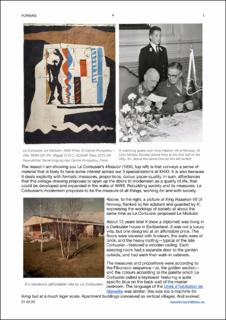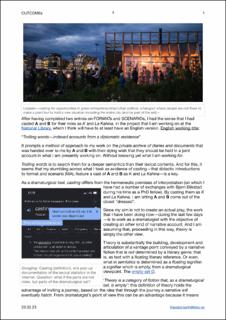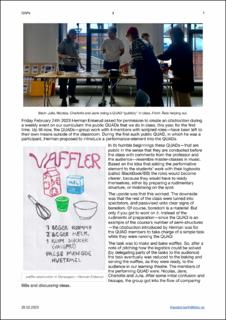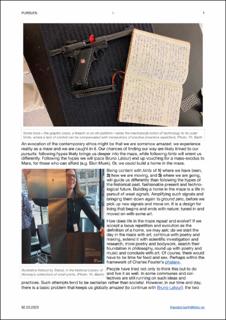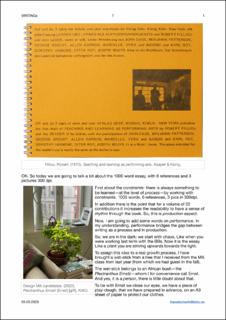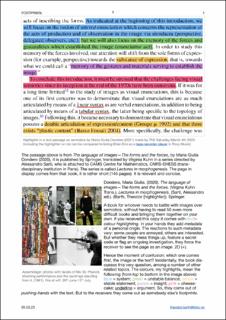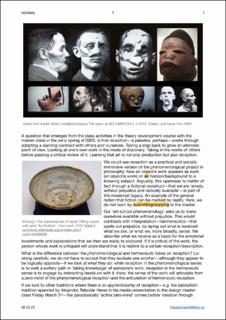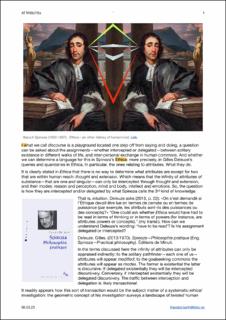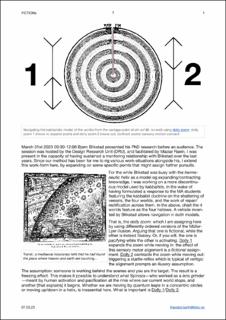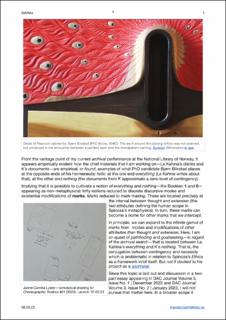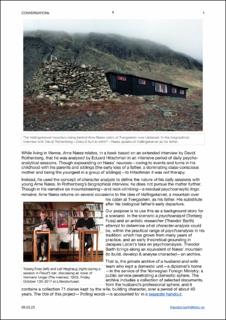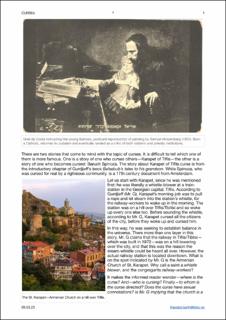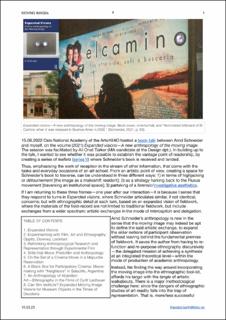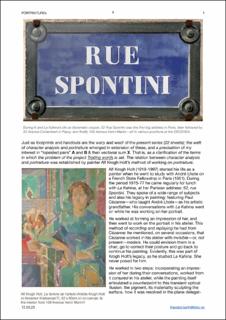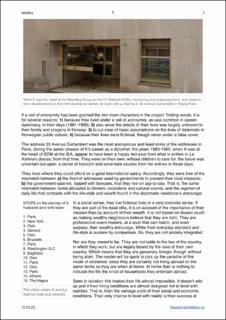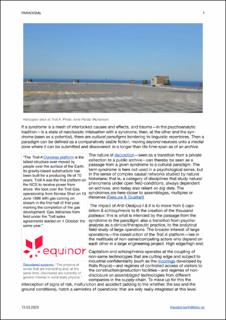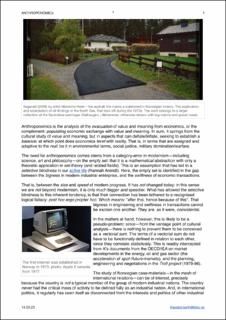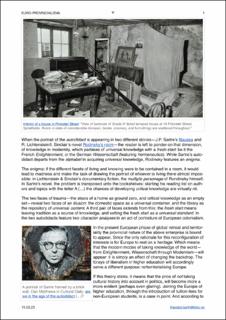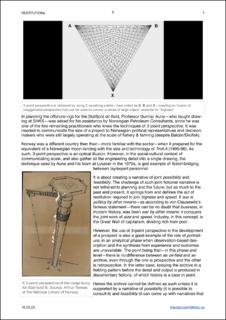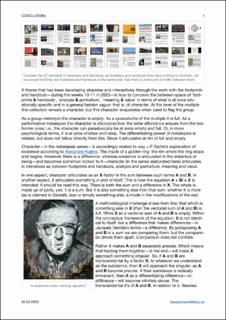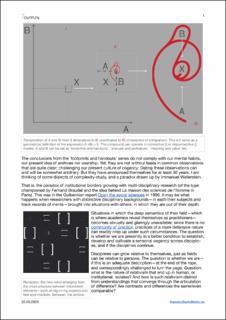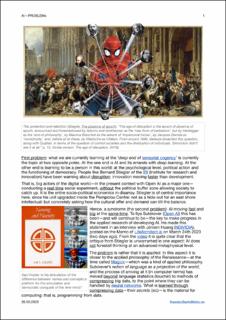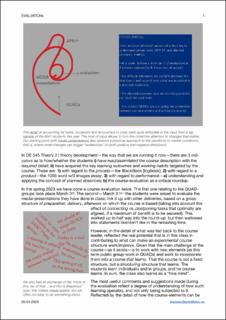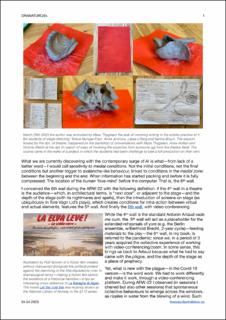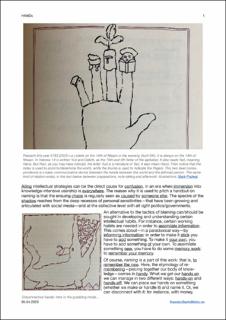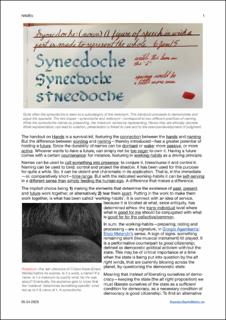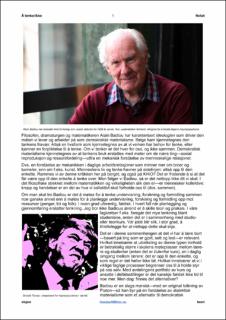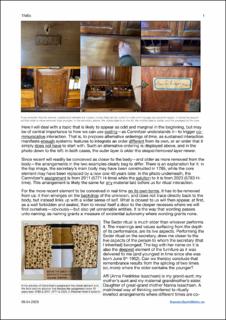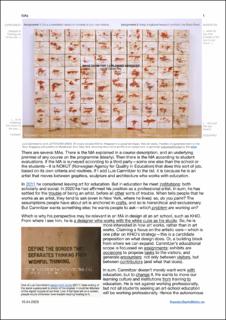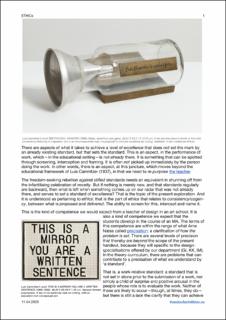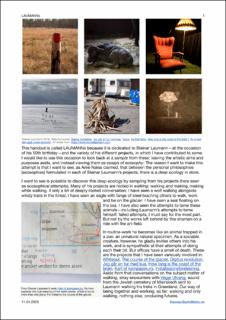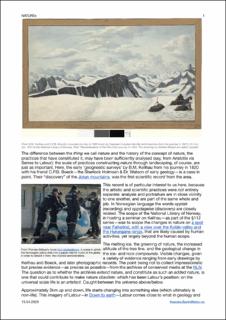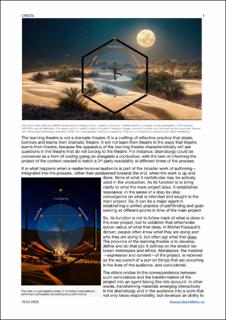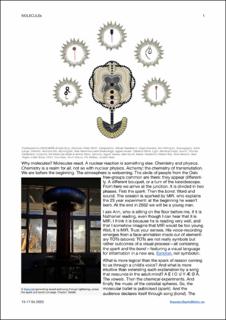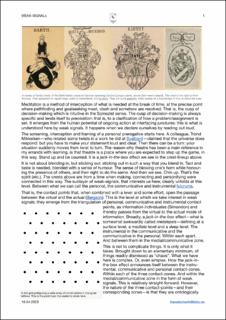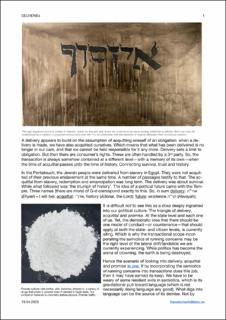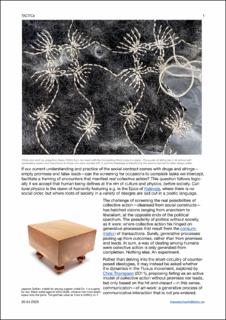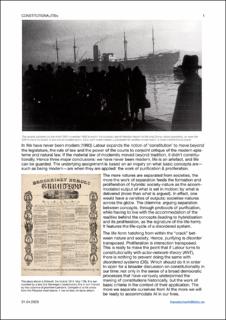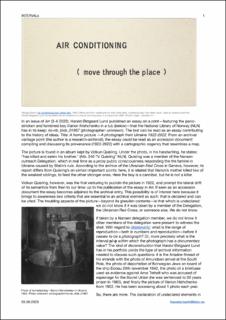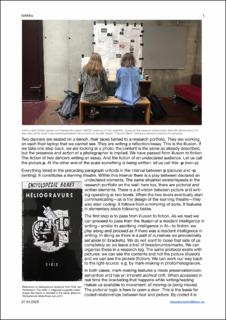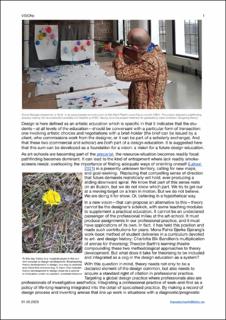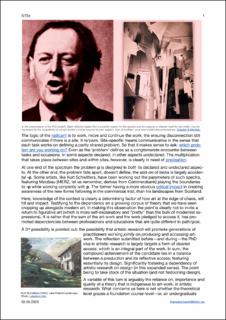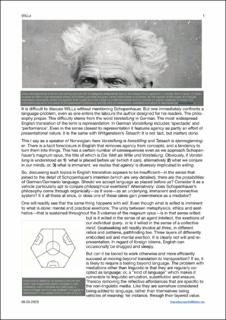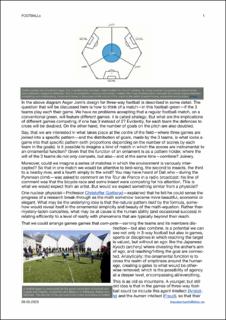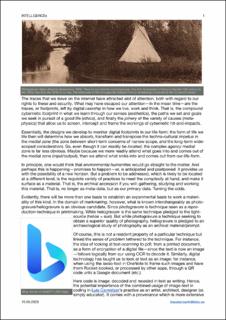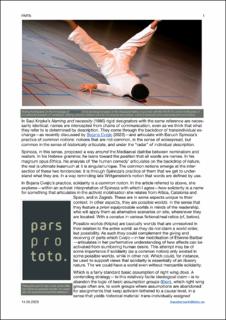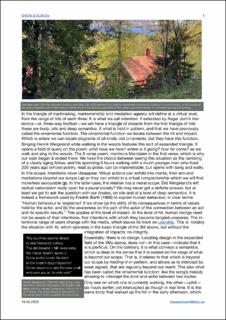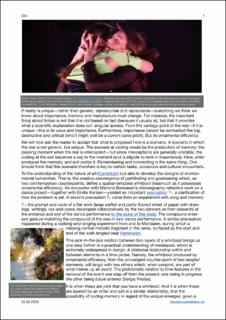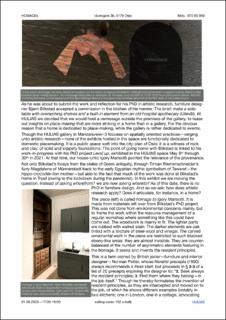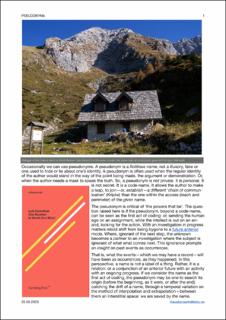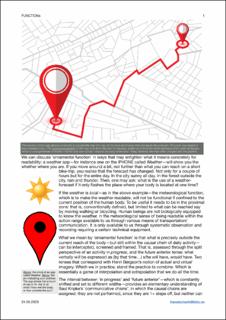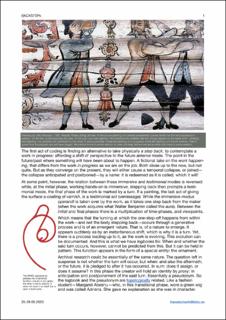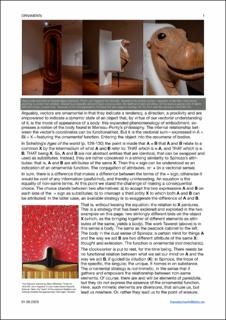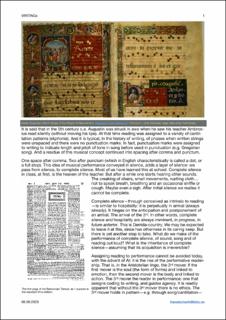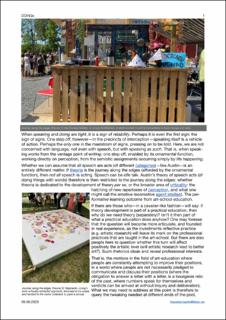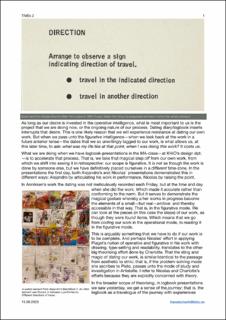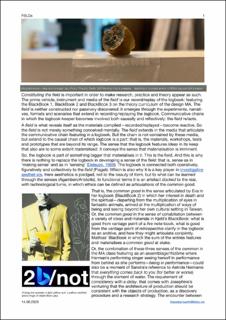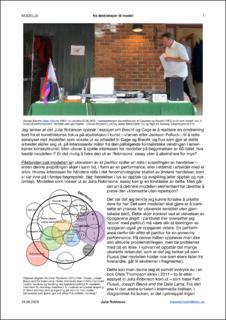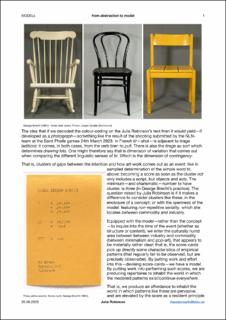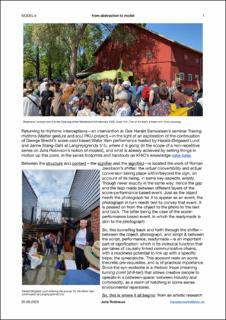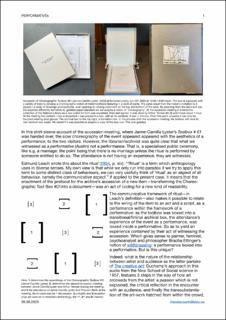| dc.description.abstract | Footprints and Handouts spring from designer Norman Potter’s idea for a publication announced in his workshop monograph on various exchanges (projects, correspondence, poetry and performance) that he did during his life in Models and Constructs—Margin Notes for a Design Culture (1990). He announced the forecasted footprints and handouts in the following terms (he never got to publish them as he passed away in 1995):
“There is an unseen part of this book, drawn from from my teaching work in architecture. This component split off at an early stage, and I hope to publish it separately under the title Footprints and handouts.”
Footprints come from steps: the sense of solitary exploration in which each new footstep follows the next. A performative definition of each step, is that it projects a new step to follow it. Each new step leaves the previous step and implies a step to come. Walking—and its footprints—therefore counts a minimum of three steps (rather than two). Footprints feature the parcours: the perambulation of 22 topics in the present collection is a case in point. It is a parcours.
Handouts come from giving: the sense interactive exploration in which the each handout features a snapshot of an exchange fragment in very different relationships. They accordingly feature the analysis and portraiture of different discourses. They have been developed around in the expanse of two weeks—weeks 10 and 11 called corridor weeks, at the design dpt.—and part of their function is to visualise the rhythm of a volume of essays with 1000 words and 3 images.
This is part of the curriculum in a course called Theory 2 devoted to theory development. There are 22 students in the class. The other function was to explore what it means to bridge artistic research with teaching, which was a topic launched by Camille Norment at the Artistic Research Week this year (2023). Some of the topics of my ongoing research at the National Library—in the project Trolling words—have been circulated in teaching, but the topics reach far beyond this.
The reader can therefore consider the Footprints and Handouts an exploration of the relation between analysis and portraiture in 22 iterations, based on a global experiment (explained above), 22 narratives, a fixed format and with the function of scenarios: in the expanded sense of proposing present alternatives within and beyond the current. That is, the present understood as alternative propositions from the now: alternative possibilities under the everyday calls and cries.
From Gilbert Simondon we know that ‘information’ also writes ‘in formation’. Accordingly, if we are interested in information in other terms than the bandwidth and computing needed for signal accuracy—that messages are wired—and instead are interested in information as a category of marks with a potential of clarifying the terms on which problems are set (precisation, Arne Næss), then we can take interest in the fictional aspects of information that will be marked by reality.
Once something has come to pass is already the past: as it happens—especially if it appears to be random—it has a projective power, and thereby a future, opening up for our response as it happens in the present. From lack of such performance, or response, the random turns into futures past. What could have been but never came about. The idea that we do not impose form, but that reality is constantly in formation, changes our odds quite a bit (cf, our approach to steps).
If we use chance-methods—which has been quite common in the art-field over the years—what we get is contingencies: if we want to turn these into vantage points of their own, which are unhinged from our presence/absence, then we have turned from the determining importance of our presence/absence as an illusion, to an understanding of fiction as a vehicle through which the real can think itself. That reality truly is a thinking thing. And that fiction is the complement of form.
Just as portraiture is the complement of analysis. Or that immersion—our partaking of reality—is the complement of reality in formation. Being a designer is acting positively a partner to creation. This understanding of the designer derives from a relation between analysis and portraiture, in which the in-formation recorded and replayed by the designer, joins the designer to the equation: since s/he is a difference that makes a difference. My work at the National Library is design work.
To each push there is a second one implied: to the footprints and handouts in 22 iterations, there is a second wave transposed unto analysis and portraiture (which is the core of what the 22 iterations explore). In this aspect, my current work on a private archive—left to me by K and La Kahina—at the National Library of Norway—features a character analysis of that archive, and a attempt at portraiture with 22 faces. The possible repertoire needed to engage with that material.
That is, in essence, a proposition: an artistic proposition with 22 aesthetico-epistemic operators (consistent with M. Schwab’s definition of exposition). Here, a fiction is but a second wave of the pulse the lies behind it. In the Talmudic literature it has a parallel in the court-house of dreams: here the dreamer came and said “I have had a dream”, which s/he then is helped not only to analyse but improve: the unconscious must be involved in our attempts to understand the real. | en_US |

